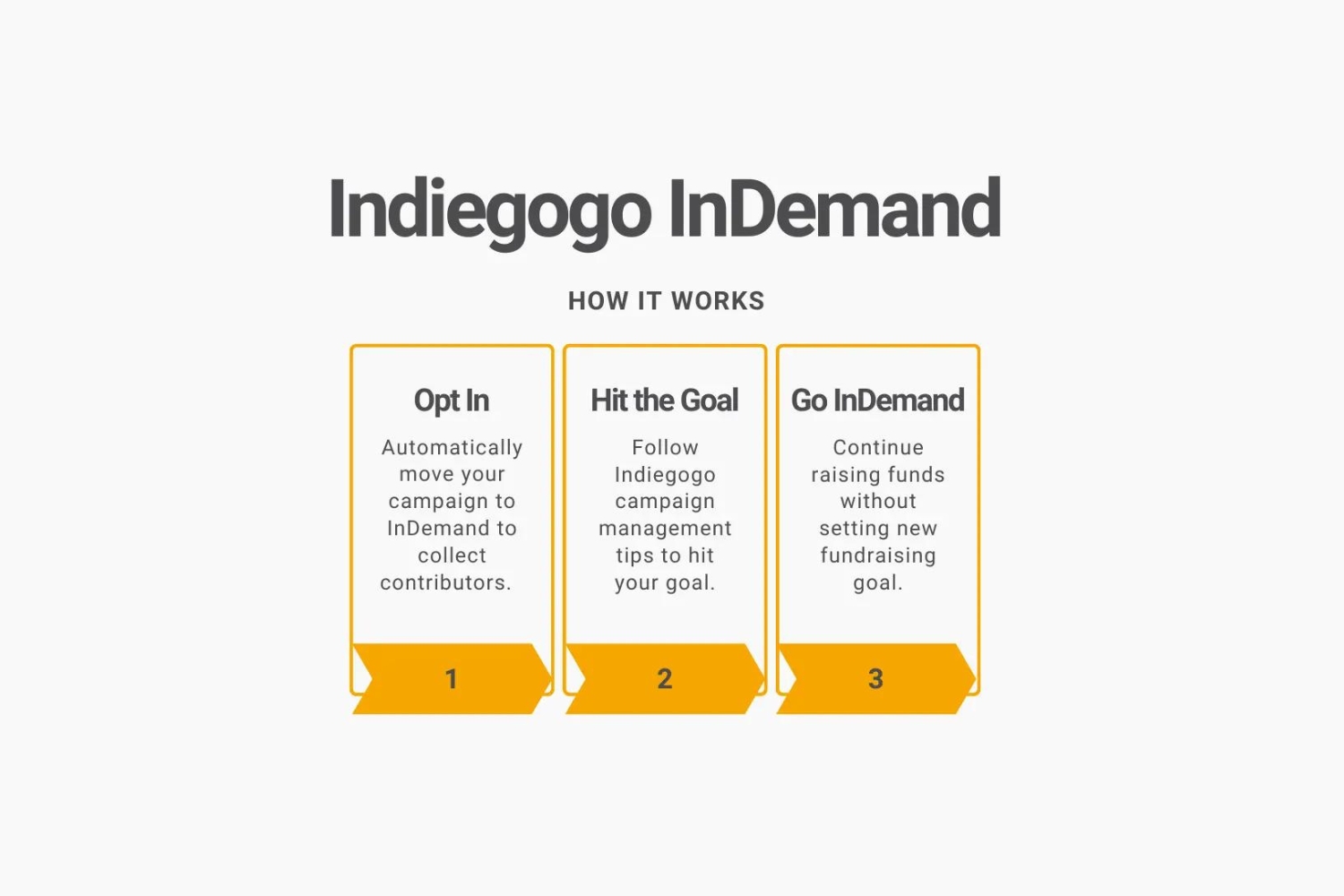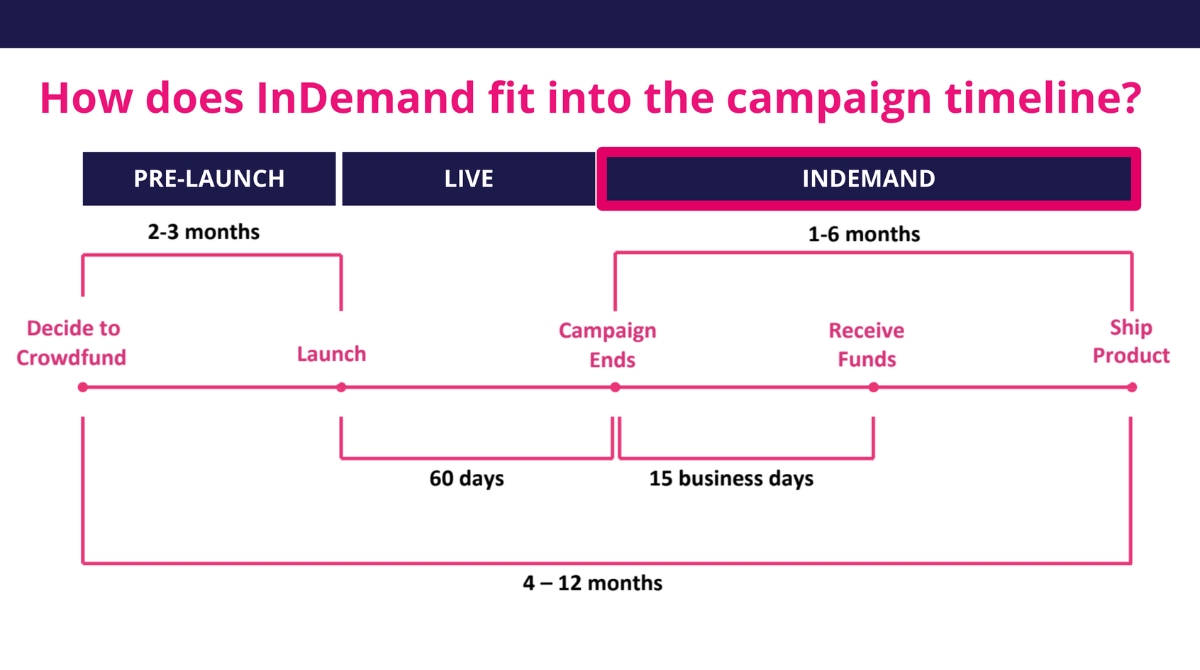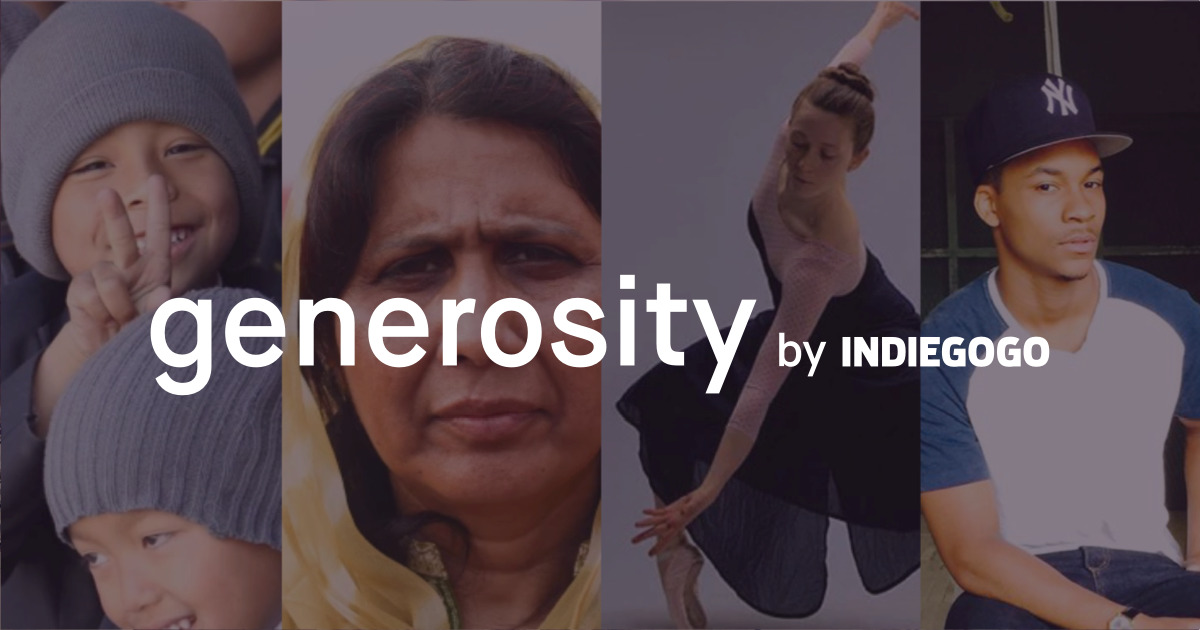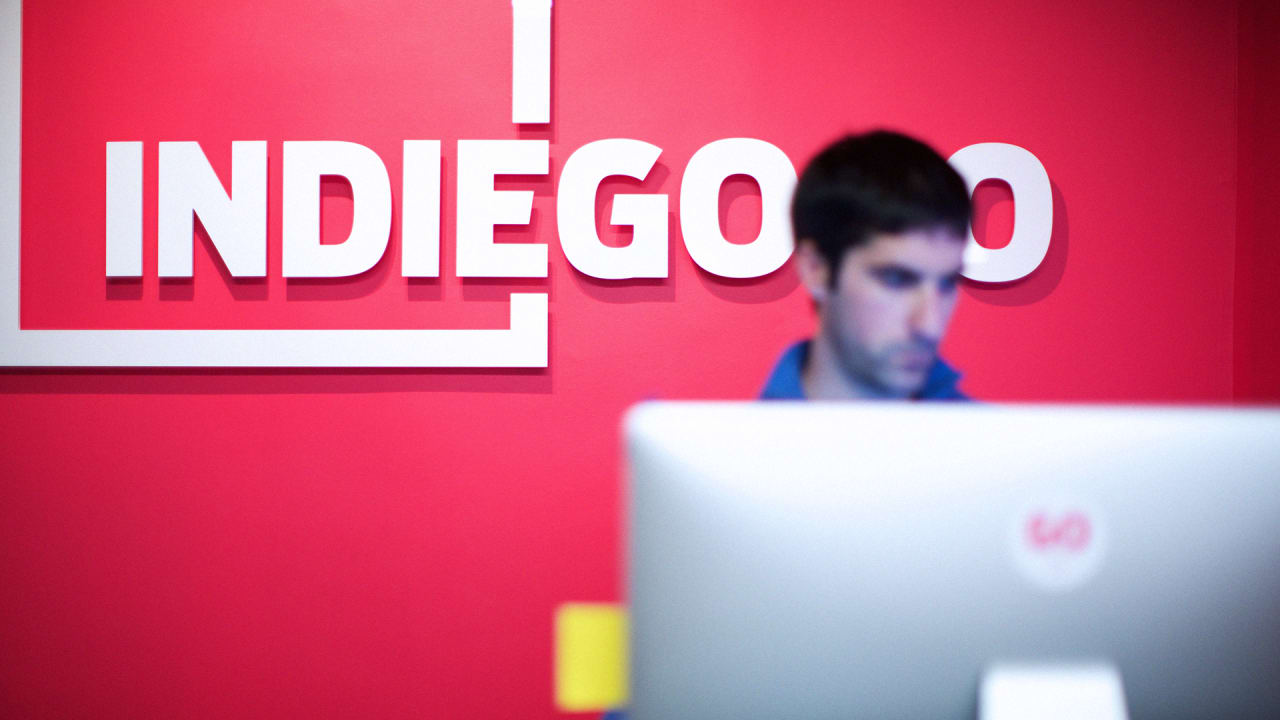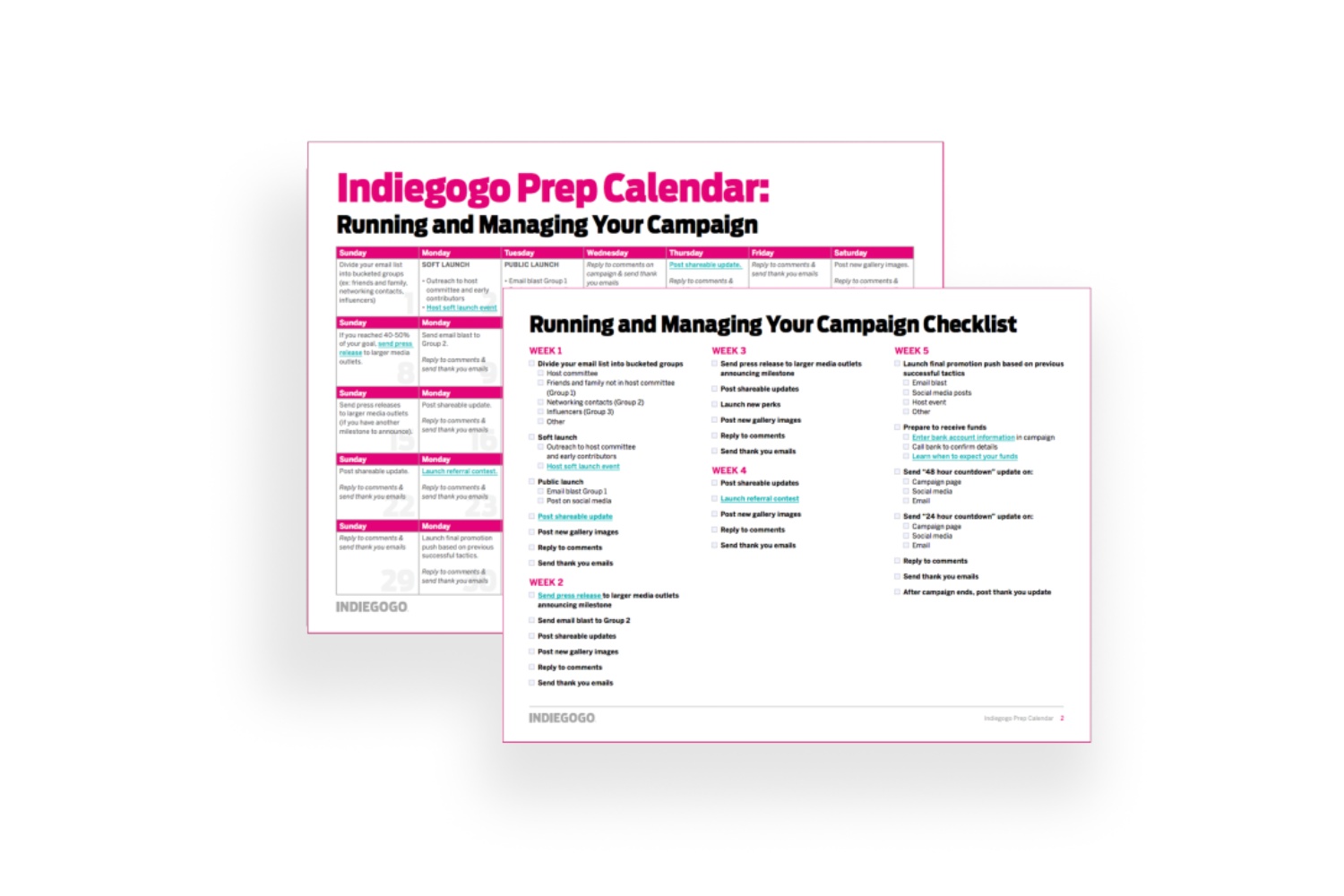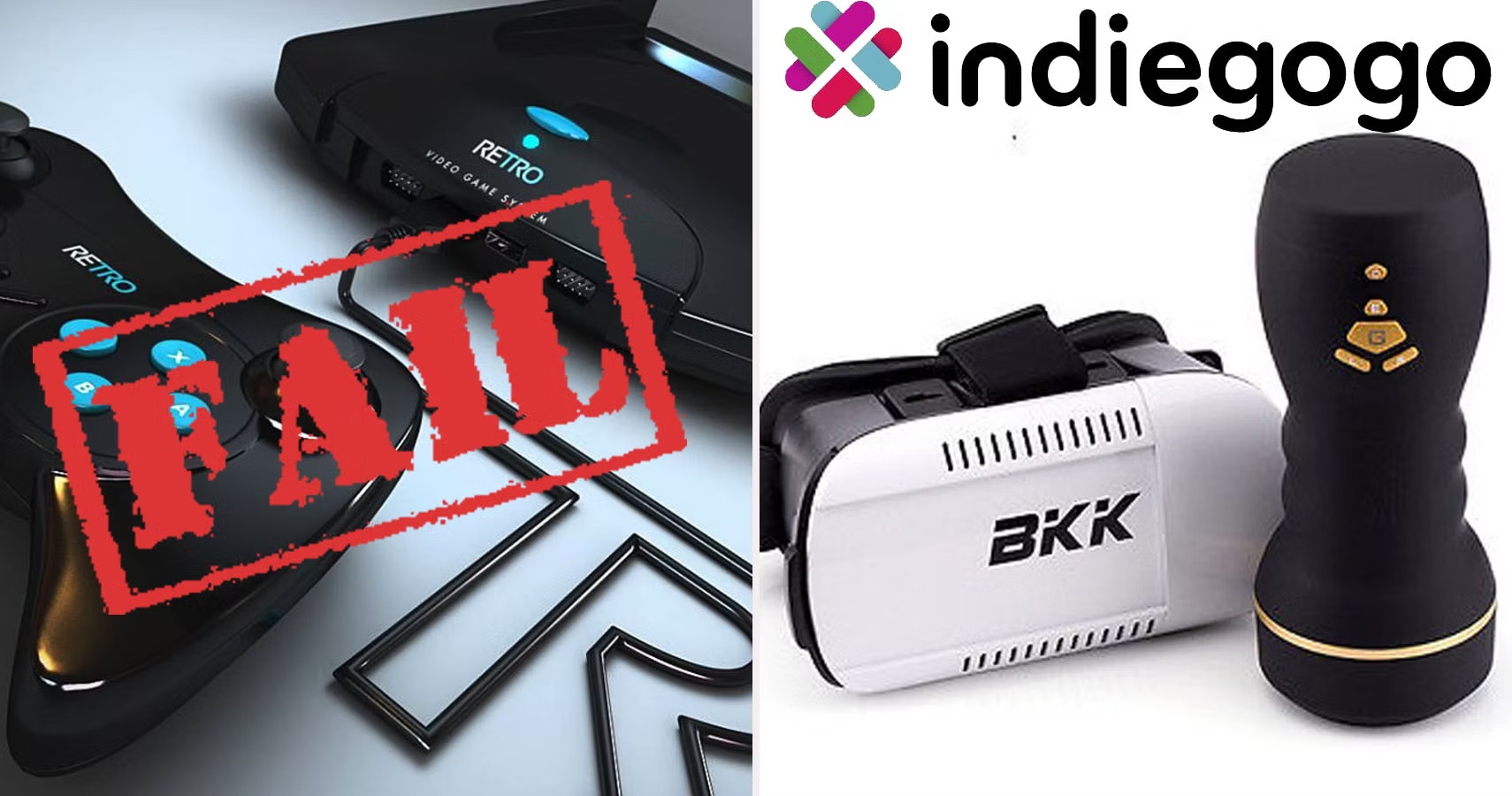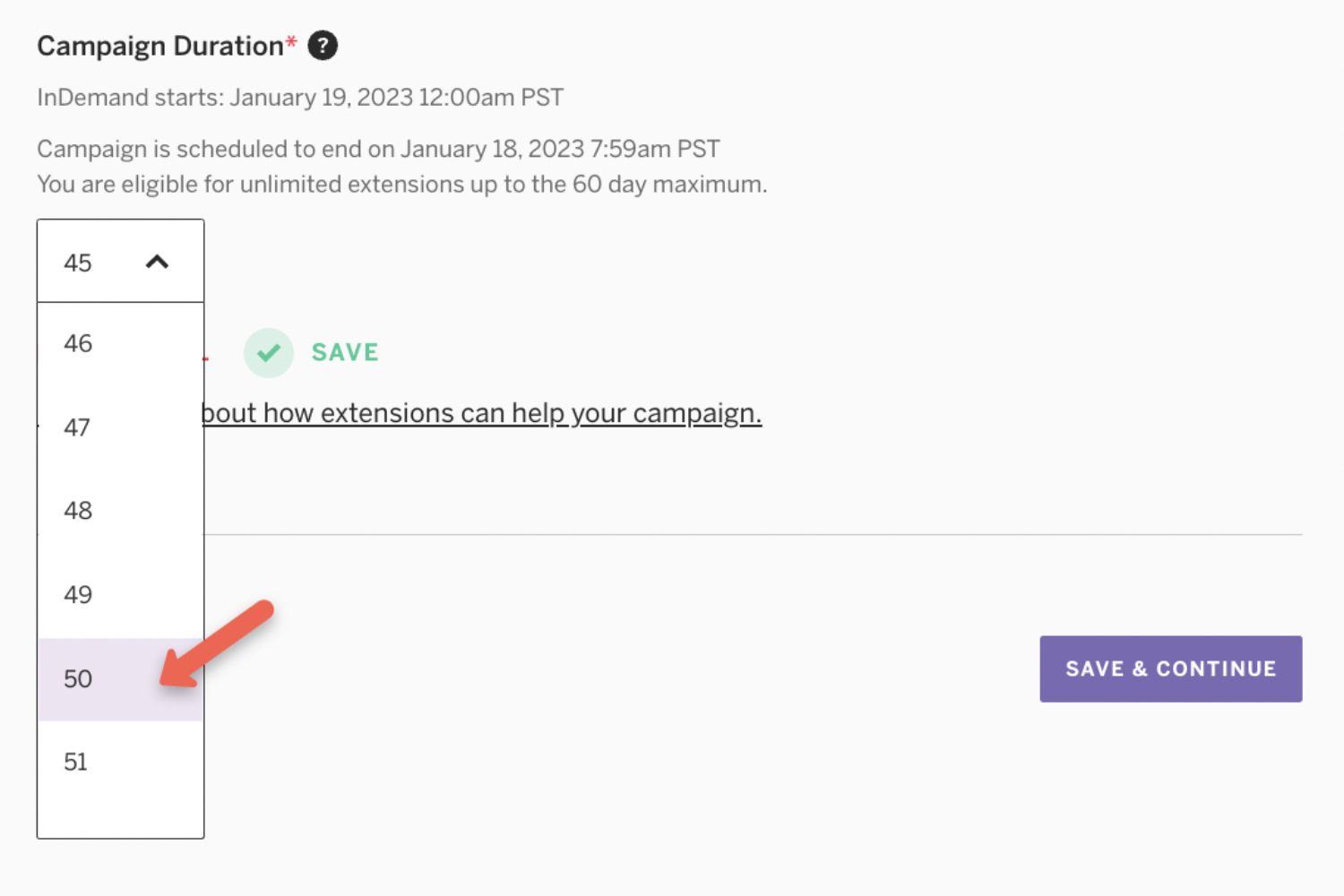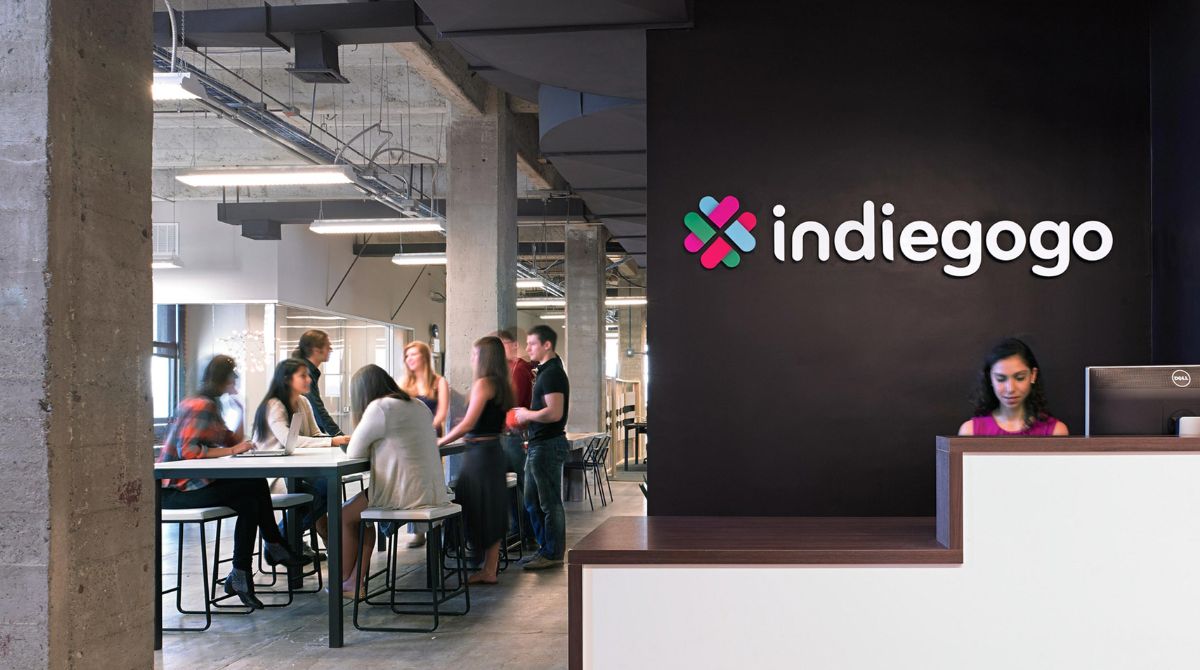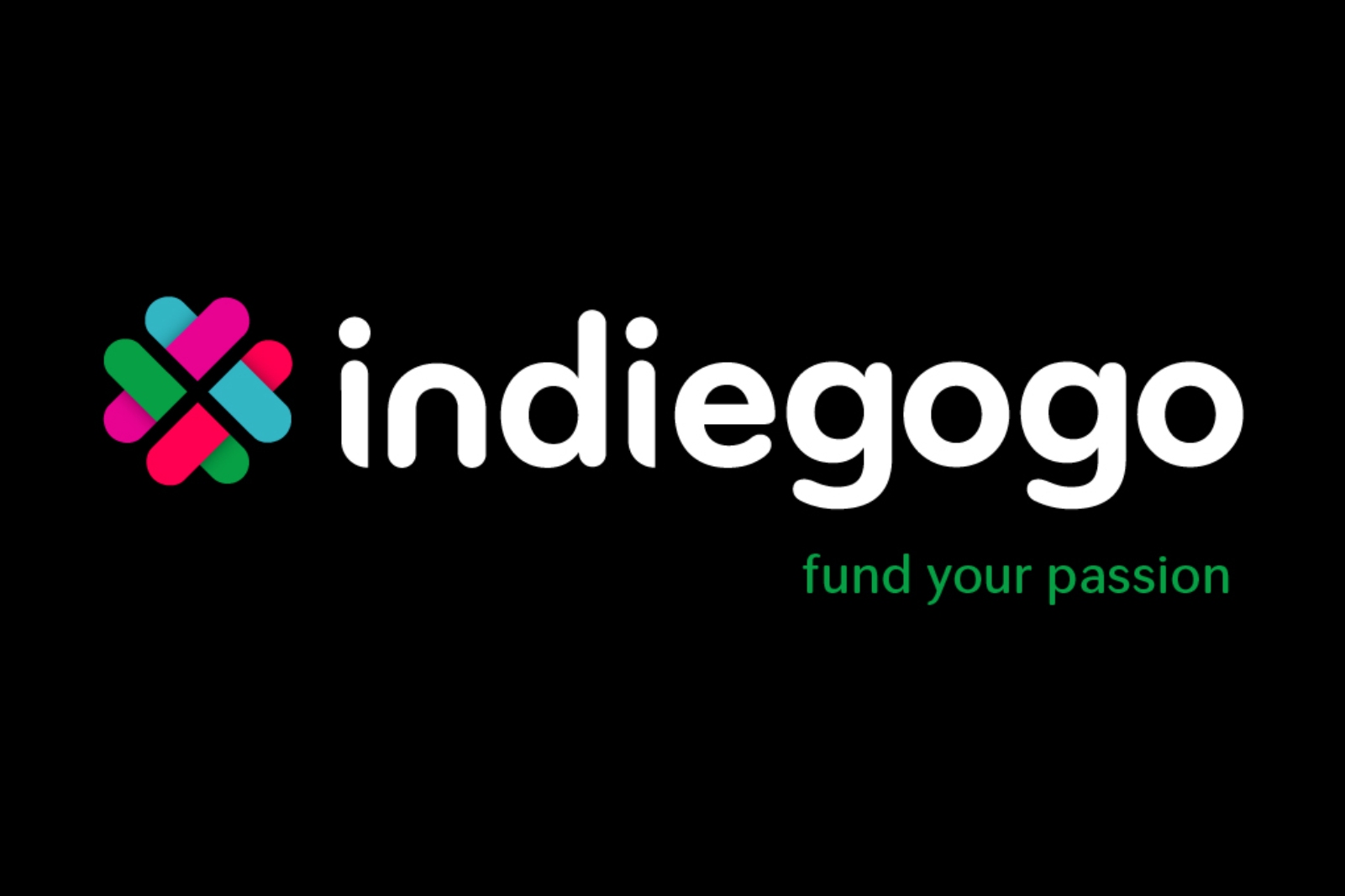Introduction
Indiegogo, a popular crowdfunding platform, has revolutionized the way individuals and organizations bring their innovative ideas, products, and projects to life. It provides a unique opportunity for creators to connect directly with their target audience and secure funding for their ventures. One of the key questions that arises when planning an Indiegogo campaign is how long it can stay open. In other words, how much time should be allocated for the campaign to run before reaching the desired funding goal?
The duration of an Indiegogo campaign is crucial as it directly impacts the success and ultimate outcome of the fundraising efforts. While there is no one-size-fits-all answer to this question, there are several factors that can influence how long a campaign should remain open.
In this article, we will explore these factors and provide valuable insights to help campaign creators make informed decisions regarding the length of their Indiegogo campaign. By understanding the dynamics at play, creators can maximize their chances of reaching their funding goals and bringing their ideas to life.
Factors Affecting the Duration of an Indiegogo Campaign
The duration of an Indiegogo campaign is influenced by various factors that can have a significant impact on its success. Understanding these factors is essential for campaign creators to decide the optimum duration of their campaigns. Here are some key factors to consider:
- Level of Demand for the Product or Project: The level of demand for the product or project being crowdfunded plays a crucial role in determining the campaign’s duration. If there is significant interest and demand in the market, a shorter campaign period may be appropriate as it can create a sense of urgency among potential backers. On the other hand, if the product or project is niche or requires more time to build awareness, a longer campaign duration may be necessary to allow for sufficient exposure and fundraising.
- Setting Realistic Funding Goals: The funding goal set for the campaign can influence its duration. It is essential to set a realistic and achievable funding goal based on the project’s scope, costs, and market potential. If the funding goal is too high, it may take longer to reach, resulting in a longer campaign duration. Conversely, setting a lower but achievable funding goal can lead to quicker funding and a shorter campaign duration.
- Creating a Compelling Campaign Page: The effectiveness of the campaign page in capturing the attention and interest of potential backers can impact the campaign’s duration. A well-designed and compelling campaign page with clear and concise information about the product or project and its potential impact is more likely to attract backers and generate funds quickly, potentially shortening the campaign duration.
- Utilizing Effective Marketing and Promotion Strategies: The marketing and promotion strategies employed during the campaign can significantly affect its duration. Leveraging various marketing channels such as social media, email marketing, content marketing, and influencer outreach can help create buzz and reach a larger audience. By implementing effective marketing strategies, campaign creators can generate momentum and funding faster, leading to a shorter campaign duration.
- Leveraging Social Media and Influencer Outreach: Social media platforms and influencer outreach can be powerful tools in spreading the word about the campaign. Building a strong online presence and engaging with potential backers through social media can create a sense of community and urgency, prompting quicker funding and a shorter campaign duration. Collaborating with influencers who have a relevant audience can also bring in more potential backers and expedite the fundraising process.
Considering these factors and evaluating their relevance to the specific project or product being crowdfunded is crucial in determining the optimal duration of an Indiegogo campaign. By carefully analyzing market demand, setting realistic goals, creating a compelling campaign page, and implementing effective marketing strategies, campaign creators can increase their chances of a successful campaign with a shorter duration.
Level of Demand for the Product or Project
The level of demand for the product or project being crowdfunded is a key factor to consider when determining the duration of an Indiegogo campaign. The demand can greatly influence the speed at which backers are attracted to the campaign and funds are raised.
If there is high demand for the product or project in the market, a shorter campaign duration may be appropriate. This is because potential backers may already be aware of the product or project and have a sense of urgency to support it. They may fear missing out on the opportunity or want to be among the first to own or experience the innovative solution being offered. By setting a shorter campaign duration, creators can create a sense of scarcity and urgency, motivating backers to contribute funds quickly.
On the other hand, if the product or project is niche or relatively unknown, it may require a longer campaign duration. Building awareness and generating interest among potential backers takes time. In this case, a longer campaign duration allows for more marketing efforts, promotional activities, and engagement with the target audience. It provides an opportunity to educate potential backers about the value and benefits of the product or project, increasing the likelihood of securing their support.
Researching the market and conducting a feasibility study can provide valuable insights into the demand for the product or project. Understanding the target audience, their needs, and their willingness to contribute funds can help creators make an informed decision about the campaign duration. By aligning the campaign duration with the level of demand, creators can optimize their chances of reaching their funding goals.
In addition to assessing the current demand, it is important to consider the potential for future growth. If the product or project has the potential to attract a larger audience over time, extending the campaign duration may be advantageous. This allows for ongoing marketing efforts and engagement to reach a wider audience and generate more funding. Stretch goals and regular updates throughout the campaign can also help maintain interest and momentum, ensuring continued support and a successful campaign.
In summary, the level of demand for the product or project being crowdfunded is a critical factor in determining the duration of an Indiegogo campaign. It is essential to assess the current demand and potential for future growth to make an informed decision. By aligning the campaign duration with the level of demand, campaign creators can maximize their chances of success and achieve their funding goals.
Setting Realistic Funding Goals
Setting realistic funding goals is essential when determining the duration of an Indiegogo campaign. The funding goal represents the amount of money needed to bring the product or project to life. It is crucial to strike a balance between setting a goal that is ambitious enough to achieve the desired outcome and being realistic about the funding potential.
If the funding goal is set too high, it may take longer to reach, thus extending the campaign duration. This can lead to a loss of momentum and enthusiasm among backers, reducing the likelihood of reaching the goal. It is important to thoroughly assess the costs involved in manufacturing, production, marketing, and fulfilling rewards to determine the funding goal. Conducting thorough research and consulting with experts or professionals in the industry can help ensure an accurate estimation of the required funds.
Conversely, setting a lower but achievable funding goal can have several benefits. It can create a sense of attainability and urgency among potential backers. When backers see that the goal is within reach, they are more likely to contribute funds quickly to help reach and surpass the goal. This can create momentum and generate widespread interest, leading to a shorter campaign duration. Moreover, exceeding the initial funding goal can also serve as a positive indicator of market demand and the potential success of the product or project.
It is important to consider the nature of the product or project when setting funding goals. Some projects may require a larger initial investment for research and development or the creation of prototypes, while others may have lower overhead costs. Additionally, the target market and competition should also be taken into account. Understanding the market landscape and the average funding levels for similar campaigns can provide valuable insights into setting realistic funding goals.
Communicating the purpose and breakdown of the funding goal transparently on the campaign page is crucial. Backers want to know how their contributions will be utilized and the impact their support will have. By providing a detailed budget or expense breakdown, creators can build trust and confidence among potential backers, increasing the likelihood of reaching the funding goal.
In summary, setting realistic funding goals is crucial for the success of an Indiegogo campaign and determining its duration. By carefully evaluating the costs involved, considering market factors, and communicating clearly with potential backers, creators can set goals that are ambitious yet attainable. This can help generate momentum, attract backers, and ultimately reach the funding goal in a shorter duration.
Creating a Compelling Campaign Page
A compelling campaign page is crucial for capturing the attention and interest of potential backers and ultimately determining the duration of an Indiegogo campaign. The campaign page serves as the primary source of information about the product or project and plays a significant role in convincing backers to contribute funds.
When designing the campaign page, it is important to focus on creating a visually appealing and engaging layout. Incorporate high-quality images, videos, and graphics that showcase the product or project effectively. Use descriptive and persuasive language to highlight the unique features, benefits, and impact of the offering. Utilize bold headlines, subheadings, and bullet points to break up the text and make it easy to skim and understand.
Clear and concise messaging is critical to ensure that potential backers can quickly grasp the essence of the campaign. Clearly articulate the problem the product or project solves, the target audience it caters to, and the value it provides. Keep the language simple and avoid technical jargon that may alienate or confuse readers.
A compelling campaign page should also include social proof and testimonials. Incorporate endorsements or reviews from industry experts, influencers, or early adopters who have experienced or tested the product. Backers are more likely to trust and support a campaign when they see others vouching for its quality and credibility.
In addition to the product or project details, the campaign page should provide transparency about the funding goal, how the funds will be utilized, and the timeline for delivery. Backers want to know that their contributions will be put to good use and that there is a clear plan in place for bringing the product or project to fruition.
An engaging and user-friendly interface is essential for guiding potential backers through the campaign page. Include a prominent call-to-action button that stands out and prompts visitors to contribute. Make the contribution process as seamless as possible, with simple and secure payment options. A clutter-free and easy-to-navigate layout will ensure that potential backers can find the information they need quickly and efficiently.
Regular updates throughout the campaign can help maintain interest and momentum. Provide backers with progress reports, behind-the-scenes glimpses, and exciting news related to the product or project. This keeps backers engaged and eager to support the campaign, potentially shortening the campaign duration.
In summary, a compelling campaign page is crucial for attracting and convincing potential backers to support an Indiegogo campaign. By focusing on visual appeal, clear messaging, social proof, transparency, and user-friendly design, creators can create a compelling campaign page that captures the attention of potential backers. This can generate enthusiasm, foster trust, and ultimately lead to a successful campaign in a shorter duration.
Utilizing Effective Marketing and Promotion Strategies
Effective marketing and promotion strategies are crucial for the success of an Indiegogo campaign and can significantly impact its duration. These strategies help reach a wider audience, generate interest, and encourage potential backers to contribute funds. Here are some key tactics to consider:
Social Media Marketing: Utilize popular social media platforms such as Facebook, Instagram, Twitter, and LinkedIn to create awareness and generate buzz about the campaign. Share engaging content, images, and videos related to the product or project. Interact with followers, respond to comments, and encourage them to share the campaign with their networks. Leverage hashtags and social media ads to expand reach and attract potential backers.
Email Marketing: Build an email list of interested individuals and regularly send them updates, progress reports, and exclusive offers related to the campaign. Craft compelling and personalized email content that highlights the benefits of supporting the campaign. Use email marketing automation tools to streamline the process and target specific segments of your audience.
Content Marketing: Create high-quality blog posts, articles, and videos that provide valuable information about the problem the product or project solves and its potential impact. Optimize content with relevant keywords and share it on your website, social media channels, and relevant industry platforms. This will help establish expertise, drive organic traffic, and attract potential backers.
Influencer Outreach: Collaborate with influencers, bloggers, and vloggers who have a relevant audience and can help promote the campaign. Reach out to them, offering a sample of the product or project and an opportunity to be part of the campaign. Their endorsement and promotion can significantly expand the reach and credibility of the campaign, attracting new backers and potentially shortening the campaign duration.
Partnerships and Cross-Promotion: Identify complementary products, projects, or organizations that share a target audience and explore partnership opportunities. Cross-promote each other’s campaigns, products, or services to tap into each other’s networks and reach a larger audience. This collaboration can help generate more interest, attract new backers, and potentially accelerate the funding process.
Public Relations: Craft a compelling press release about the campaign and distribute it to relevant media outlets, journalists, and bloggers. Develop relationships with journalists and offer exclusive interviews or insights related to the campaign. Securing media coverage can significantly boost visibility and attract potential backers who may not have been aware of the campaign otherwise.
Paid Advertising: Consider allocating a budget for paid advertising on platforms such as Google Ads or social media ads. Target specific demographics and use keywords relevant to the campaign to reach potential backers who are actively searching for similar products or projects. Experiment with different ad formats and monitor the results to optimize the campaign’s performance.
By employing a combination of these marketing and promotion strategies, campaign creators can generate momentum, create a buzz, and attract potential backers. It is important to monitor and analyze the impact of each strategy to make data-driven decisions and adjust the marketing efforts accordingly. Leveraging these effective strategies can help maximize the success of an Indiegogo campaign and potentially shorten its duration.
Leveraging Social Media and Influencer Outreach
Social media and influencer outreach are powerful tools that can significantly impact the success and duration of an Indiegogo campaign. By leveraging these platforms, creators can reach a wider audience, generate more interest, and attract potential backers. Here’s how to effectively utilize social media and influencer outreach:
Social Media Platforms: Select the appropriate social media platforms, such as Facebook, Instagram, Twitter, or LinkedIn, based on the target audience and campaign objectives. Set up dedicated campaign pages or profiles with compelling visuals, engaging content, and clear calls-to-action. Regularly post updates, share behind-the-scenes glimpses, and interact with followers to build a sense of community and foster engagement.
Hashtags and Sharing: Incorporate relevant hashtags in your social media posts to increase discoverability and reach a broader audience. Encourage backers and followers to share the campaign with their networks by providing easy-to-use share buttons or creating referral programs that incentivize word-of-mouth promotion.
Influencers: Identify influencers within your niche or industry who have a significant following and align with the values and target audience of your campaign. Reach out to them and offer to provide them with a sample of your product or a firsthand experience with your project. In return, ask them to create content or endorse your campaign to their followers. This can help expose your campaign to a larger audience and boost its credibility and reach.
Affiliate Programs: Consider implementing an affiliate program where influencers and backers are given a unique referral link to share with their audience. When someone contributes to the campaign through their referral link, the influencer or backer receives a reward or commission. This incentivizes influencers to actively promote the campaign and recruits backers to become advocates.
Collaborations and Takeovers: Partner with influencers for collaborations or takeovers on social media. This involves handing over control of your campaign’s social media account or giving influencers the opportunity to create content on your behalf. This creates a sense of exclusivity and provides new, fresh perspectives that can attract more attention and engagement.
Engaging with Followers: Actively engage with followers by responding to comments, messages, and feedback. Show appreciation for their support and create a dialogue to build relationships and a loyal community. Encourage backers to share their experiences with the campaign and the product or project, fostering a sense of authenticity and trust.
Monitoring and Analytics: Regularly monitor the performance of your social media and influencer outreach efforts. Track metrics such as engagement, reach, and conversion rates to understand which tactics are driving the most impact. Use analytics tools and insights to make data-driven decisions and optimize your social media and influencer strategies.
By effectively leveraging social media and influencer outreach, creators can expand their reach and visibility, attract potential backers, and create a buzz around their campaign. However, it is important to research and engage with influencers who align with the campaign’s values and target audience to ensure authentic and impactful partnerships. With the right social media and influencer strategies in place, campaign creators can maximize their chances of success and potentially accelerate the duration of their Indiegogo campaign.
Innovative Stretch Goals and Updates
Incorporating innovative stretch goals and providing regular updates throughout an Indiegogo campaign can have a significant impact on its duration and success. Stretch goals are additional funding targets set beyond the initial funding goal, offering backers exciting incentives and rewards as the campaign reaches new milestones. Here’s how to effectively utilize stretch goals and updates:
Engaging Backers: Stretch goals provide motivation and a sense of excitement for backers to continue supporting the campaign. By reaching and surpassing these goals, backers feel a sense of achievement and increased value for their contributions. This engagement can help maintain interest and momentum, potentially shortening the campaign duration.
Creative Incentives: When setting stretch goals, consider offering unique and creative incentives that align with the product or project. These incentives can include exclusive features, limited-edition merchandise, or additional services. The key is to provide incentives that are enticing and valuable to backers, ensuring their continued support and enthusiasm.
Transparency and Communication: Clearly communicate stretch goals to backers through campaign updates, social media posts, and email newsletters. Explain how each stretch goal will enhance the product or project, and how it aligns with the initial vision. Transparency and regular communication foster trust and keep backers engaged, encouraging them to spread the word and attract new contributors.
Showcasing Progress: Regularly update backers on the progress of the campaign, highlighting the achievements reached with each stretch goal. Share images, videos, or testimonials that demonstrate improvements or milestones accomplished. This not only shows backers that their support is making a difference but also attracts new backers who can see the campaign’s growth and impact.
Surprise and Delight: In addition to stretch goals, surprise backers with unexpected updates or bonuses. Introduce innovative features or add-ons that were not initially part of the campaign. These surprises can create a buzz and generate additional excitement, motivating backers to contribute and share the campaign with others.
Backer Engagement: Actively engage with backers throughout the campaign by responding to comments, addressing concerns, and encouraging feedback. Incorporate their ideas or suggestions into the campaign whenever possible, making them feel involved and valued. Building a strong relationship with backers fosters a sense of community and loyalty, increasing the chances of ongoing support and shorter campaign durations.
Clear Milestones: Define clear and achievable milestones for each stretch goal and communicate them to backers. Clearly outline the steps or features that will be unlocked as the campaign progresses. This creates a roadmap that backers can get excited about and helps build anticipation for reaching each milestone.
Incorporating innovative stretch goals and providing regular updates is a powerful strategy to keep backers engaged, attract new supporters, and potentially shorten the duration of an Indiegogo campaign. The key is to offer compelling incentives, communicate progress transparently, and foster a strong sense of community. By continually surprising and delighting backers while showcasing the campaign’s achievements, creators can generate momentum, increase buzz, and drive the campaign towards success.
Engaging with Backers and Building a Community
Engaging with backers and building a sense of community is crucial for the success and duration of an Indiegogo campaign. By fostering a strong relationship with backers, campaign creators can generate loyalty, attract new supporters, and create a network of advocates. Here’s how to effectively engage with backers and build a community:
Regular Communication: Communicate with backers regularly throughout the campaign to keep them informed and involved. Provide updates on the campaign’s progress, milestones reached, and any challenges or successes encountered. Utilize email newsletters, social media posts, and campaign updates to maintain open lines of communication and build trust.
Addressing Questions and Concerns: Actively listen to the feedback, questions, and concerns raised by backers. Respond promptly and provide thoughtful and transparent answers. By addressing and resolving issues in a timely manner, creators can demonstrate their commitment to backers and instill confidence in the campaign.
Offering Backer-Exclusive Content: Provide backers with exclusive access to behind-the-scenes content, updates, or sneak peeks. Share detailed progress reports, production updates, or insights into the creative process. This creates a sense of exclusivity and makes backers feel like valued insiders, fostering a deeper connection with the campaign.
Involving Backers in the Decision-Making Process: Seek input from backers and involve them in certain aspects of the campaign. Conduct polls or surveys to gather feedback on product features, design choices, or stretch goal options. By involving backers in the decision-making process, creators can make them feel personally invested in the campaign’s success.
Recognizing and Thanking Backers: Show appreciation for the contributions and support of backers. Publicly acknowledge and thank them through social media shout-outs, personalized messages, or backer-exclusive rewards. Recognizing their involvement and expressing gratitude fosters a sense of loyalty and encourages continued support.
Encouraging User-Generated Content: Encourage backers to share their experiences, reviews, or testimonials about the campaign. Create a hashtag or a dedicated forum where backers can share their stories and feedback. User-generated content serves as social proof and can attract new backers who see the positive experiences shared by others.
Host Backer-Exclusive Events or Webinars: Organize virtual events or webinars exclusively for backers. Provide an opportunity for them to connect with the campaign team, ask questions in real-time, and gain deeper insights into the project. These events foster a sense of community and allow backers to interact with each other, further strengthening their connection to the campaign.
Encouraging Backer Referrals: Incentivize backers to refer the campaign to their networks by offering rewards or discounts for successful referrals. This not only helps expand the reach of the campaign but also reinforces the importance of backers as brand ambassadors and advocates.
Responding to Feedback and Iterating: Actively listen to the suggestions and feedback provided by backers throughout the campaign. Incorporate viable suggestions or improvements into the campaign, demonstrating that creators value and prioritize the needs of backers. This iterative approach not only enhances the campaign but also shows backers that their opinions matter.
By actively engaging with backers and building a community, creators can tap into the enthusiasm and support of their most passionate supporters. By fostering a sense of belonging and appreciation, campaign creators can generate greater loyalty, attract new backers through word-of-mouth, and potentially accelerate the campaign’s success.
Maintaining Momentum Throughout the Campaign
Maintaining momentum throughout an Indiegogo campaign is crucial for its success and duration. As the campaign progresses, it is important to keep backers engaged, attract new supporters, and continuously generate buzz. Here’s how to effectively maintain momentum throughout the campaign:
Regular Updates: Provide regular updates on the campaign’s progress, milestones, and any exciting news related to the product or project. Share behind-the-scenes glimpses, success stories, or testimonials from backers. These updates keep backers informed and excited, maintaining their engagement and enthusiasm.
Interactive Content: Make your campaign content interactive to keep backers engaged. Incorporate polls, quizzes, or contests that encourage active participation. Create opportunities for backers to offer their opinions or suggestions, fostering a sense of involvement and ownership in the campaign’s success.
Engaging Visuals: Utilize compelling visuals, such as high-quality images, videos, or infographics, to convey the essence and impact of the product or project. Eye-catching visuals capture attention and make a lasting impression on backers, encouraging them to share the campaign with their networks.
Offer Limited-Time Rewards: Introduce limited-time rewards or early bird specials to create a sense of urgency among backers. By offering exclusive rewards or discounts within a specific timeframe, you encourage backers to contribute sooner rather than later, maintaining momentum and generating a sense of excitement.
Collaborate with Influencers: Continue leveraging influencer partnerships throughout the campaign to reach new audiences and generate buzz. Collaborate on content creation, share endorsements, or host joint events or giveaways to tap into their networks. Influencers can bring in fresh perspectives and attract new supporters to the campaign.
Community Engagement: Nurture a sense of community among backers by encouraging interaction and dialogue. Set up a dedicated forum or engage in post comments on social media to create a space for backers to connect with one another. By fostering a sense of community, you encourage backers to support and promote the campaign to their peers.
Promote the Campaign Offline: Extend your campaign promotion beyond digital channels. Attend relevant industry events, trade shows, or conferences to showcase your product or project. Engage in networking opportunities and connect with potential backers face-to-face. Offline promotion can generate buzz and attract backers who may not have discovered the campaign online.
Partnerships and Cross-Promotion: Continuously seek opportunities for partnerships and cross-promotion with complementary products, projects, or organizations. Collaborate on joint marketing initiatives, guest blog posts, or joint fundraising efforts. These partnerships can introduce your campaign to new audiences and help maintain momentum throughout the campaign.
Engage in PR Efforts: Reach out to media outlets and journalists to secure press coverage and interviews related to the campaign. Public relations efforts can generate widespread awareness, build credibility, and attract potential backers who may discover the campaign through media exposure.
Stay Responsive and Accessible: Continue to engage with backers by responding promptly to their messages, comments, or inquiries. Ensure that your campaign page, website, and contact information are easily accessible. Demonstrating your responsiveness and accessibility helps foster trust and encourages backers to support the campaign.
Maintaining momentum throughout the campaign requires consistent effort, engagement, and creativity. By providing regular updates, utilizing interactive content, offering limited-time rewards, collaborating with influencers, fostering community engagement, promoting the campaign offline, seeking partnerships, engaging in PR efforts, and staying responsive to backers’ needs, creators can keep the momentum going and increase the chances of a successful campaign.
Conclusion
When planning an Indiegogo campaign, the duration of the campaign plays a crucial role in its success. By considering various factors such as the level of demand, setting realistic funding goals, and leveraging effective marketing strategies, campaign creators can determine the optimal duration for their campaigns.
The level of demand for the product or project being crowdfunded is a key factor that influences the campaign duration. By analyzing the market and understanding the potential interest and reach of the product or project, creators can determine whether a shorter or longer campaign duration is necessary. Setting realistic funding goals also plays a vital role in determining the campaign duration. By setting goals that are attainable yet ambitious, creators can motivate backers to support the campaign and potentially shorten the duration.
Crafting a compelling campaign page is essential for attracting and convincing potential backers. By incorporating visually appealing design, clear messaging, and social proof, creators can capture the attention and interest of potential backers, potentially leading to a shorter campaign duration.
Effective marketing and promotion strategies, including social media and influencer outreach, are crucial for generating buzz and reaching a wider audience. By leveraging these platforms and strategies, creators can maximize their campaign’s potential and potentially accelerate the duration of the campaign.
Innovative stretch goals and regular updates help maintain momentum throughout the campaign. By engaging with backers, providing exclusive content, and surprising them with unexpected updates or bonuses, creators can keep backers excited and attract new supporters, potentially shortening the campaign duration.
Engaging with backers and building a community is key to fostering loyalty and generating ongoing support. By offering regular communication, addressing questions and concerns, recognizing and thanking backers, and involving them in the decision-making process, creators can create a sense of community and encourage backers to become advocates for the campaign.
Maintaining momentum throughout the campaign is crucial for its success. By providing regular updates, utilizing interactive content, offering limited-time rewards, collaborating with influencers, fostering community engagement, and promoting the campaign offline, creators can keep the campaign in the spotlight and maintain interest and support from backers.
In conclusion, the duration of an Indiegogo campaign is influenced by various factors, and careful consideration and planning are necessary to ensure its success. By understanding these factors and implementing effective strategies, creators can maximize their chances of reaching their funding goals and bringing their innovative ideas, products, and projects to life.







